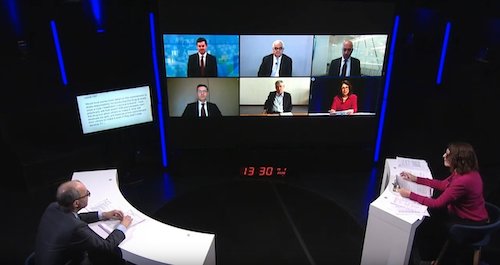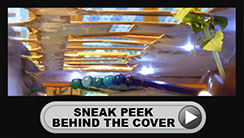Guest Blogs
Knowitall.ch often invites local experts in their field to contribute to their own blogs on our site. This means not only you will benefit from the useful recommendations that we make on our News pages, but you can also profit from some of the great advice and tips that these experts have to make on their favorite subjects. Whilst each of these bloggers has been recommended to us at some point during the evolution of Know-it-all passport and knowitall.ch, obviously we are not able to test out all the suggestions they make on their blogs, nor do we necessarily agree with all their opinions. So if you do find one of their tips useful (or not!), do let us know!
To make these blogs more accessible to you, we have now decided to group them altogether in one section, entitled Guest Blogs, accessible from our main menu bar. We will also post the most recent blogs on the home page of our site in the right hand column.
We are still building up this area of the site, and are looking for bloggers in a number of sections, including Your Home, Travel, and Leisure, so if you feel you have a useful contribution to make in either of these areas, and have the time to submit blog entries approximately every month, then please get in touch!

By Claire Doole, www.doolecommunications.com
Travel bans, remote working and social distancing are making us all think creatively on how we can continue to interact and get our messages across to as many people as possible.
On Thursday, 19 March, I was involved in what the main newspaper in French-speaking Switzerland, Le Temps, called an " unprecedented online press conference" on the pharmaceutical industry's response to COVID-19.
Working with an excellent team from Acumen public affairs, we brought together the heads of 5 global pharmaceutical companies for a press briefing with media from around the world - with just a week's notice.
Here are my tips and lessons learnt on how to moderate a live studio discussion and press briefing. We are in unprecedented times but the tips apply to any studio setting.

Photo by Andrea Leopardi on Unsplash
By Anna Lascols, Organizing Geneva
I would have never imagined to write this kind of blog post. Just as all of us would have never imagined to be living in our homes for an undefined number of weeks, without being able to go out, go to work, meet our friends, bring our kids to school… we feel like in a blockbuster scenario, stuck in a couple of square meters, anxious to even go for groceries. Our basic routines are threatened, we watch the news and worry, Covid-19 is in all our discussions, we do not know what will happen next. Will the contamination rate go down? When will we get our freedom back? When can we go back to work? And when can we send our kids back to school?
Yes, all of this sitting at home would be nice if we had a couple of extra vacation days and could relax on the couch, read books, have a nice cappuccino and practice yoga all day! If you are like me, then reality does not look like that though! In reality, we have to work from home, without actually seeing our colleagues and clients, but WITH our kids around. We have to simultaneously home school them, be creative, limit the number of screen hours, explain why home is the best place to be, stay calm, cook and tidy! That is like being a 200% stay at home parent while working 100% on top. WOW! Who can do this?
I must say, the first week was pretty ok. Sun was shining, in Switzerland we are still allowed to go outside without being fined, kids are quite excited to learn things from their parents and some video calls with their best friends kept up the spirit. Yet, this was only week 1! How are we going to talk about this in week 8? Here is my prognosis: those who consider this as a marathon will win, stay mentally healthy, enjoy their family time, invent break through business ideas and be able do things at home they never had time to do before; those who prefer the sprint will end up in Covid-burnout.
You will need to hold your pace through the long run, through an undefined number of weeks. So set yourself up for success! How? Here a couple of humble tips from my side:

By Melitta Campbell, www.melittacampbell.com
No one starts out in business as a successful entrepreneur. It’s what you become in the process of creating, trying, failing and learning. There is a certain magic in learning and building as you go too, which makes creating and growing a business all the more exciting.
But this excitement is often accompanied by fear and doubt.
You know you want to start a business, but if you don’t know exactly where to start it can feel like a daunting task, leading you to feel overwhelmed and start doubting your ability to make your dreams a reality. Then the fear of how others will react to your ideas can creep in too. Success can feel like a distant dream – procrastination is often the easier option!
Fear, doubt and overwhelm are all normal reactions when creating your own business. It’s easy to get caught in a cycle of self-doubt, questioning your abilities and worrying about what others think. The result? We stay small. We don’t allow ourselves to dream big or chase what we truly want.
However, it doesn’t have to be this way. By taking the right actions, doubt can be turned into determination! Here’s how…
Ditch the traditional business plan
There’s a common misconception that to be successful in business you need to start with a fancy business plan, elaborate marketing strategy and beautiful website.
While these are important, they can often distract you from answering the real questions that will help you form the foundation of a solid long-lasting and heart-centred business.

By Claire Doole, Claire Doole Communications
"I am not really comfortable with storytelling. I don't see how I can use it in my work". This is a typical response from senior managers/executives to the idea of attending a storytelling workshop. And what's more, I understand where they are coming from. As a BBC journalist, I was a professional storyteller - every day looking for the nugget of gold that I could mine to tell a story about something that had changed in the world.
But telling other people's stories was much easier than telling my own. Journalists don't like being the centre of the story - it makes them, among other things, feel vulnerable. What I have learned as a trainer, moderator and coach is that storytelling is about sharing experiences – either your own or someone else’s - so that you connect and build rapport, trust and credibility with those around you.
Research shows that our brains are hardwired to listen and to tell stories. Stories are how we think, make meaning of life and explain how things work. They help us make decisions, persuade others, create identities and teach social values.
In a business or organisational setting storytelling helps to sell, educate, inspire and motivate. It is a strategic tool that can bring you closer to your colleagues, clients and peers and transform how you and your organisation are perceived.

Photo by Anthony Fomin on Unsplash
By Anna Lascols, Organizing Geneva
Everyone knows that growing up is a challenge. For some blessed individuals it seems to be easy, but most of us stumbled upon one or the other obstacle on the way. Be honest with yourself: did you prefer playing outside or finishing your homework? Did you fight with your parents about tidying your room? Did you have to invent strategies enabling you to come home after 11pm? Did you secretly smoke with your friends thinking how cool you were? How did you end up paying your first bill, not talking about submitting your taxes while preparing your meal plan and signing up your kids for activities? How did we actually get to learn all these dull things adults have to manage?
Somehow, we got were we are right? We fought our way through the jungle, we fell and stood up again, we failed and succeeded, we laughed and we cried. We became a real adult. We can be proud.
Wait a minute, maybe some credits should also go to our parents, who were our worst enemies when it came to partying and curfew time, but who most probably gave us some hints and rules on how to grow up. Making a bed, sewing a button, baking a cake, keeping a schedule, managing a budget, eating healthy, being polite…whatever it is, thanks dear parents!
Generations changed however…believe it or not, there is a new word for growing up in the 21st century jungle: “Adulting”. Kids seem to believe that this process is so strange and incomprehensible, that some of America’s greatest universities like Berkeley created classes on Adulting. To help their students grow up…to teach them about taxes, nutrition, time management, bills and home duties. Teens are lost nowadays when it comes to all the practical admin and household tasks.









